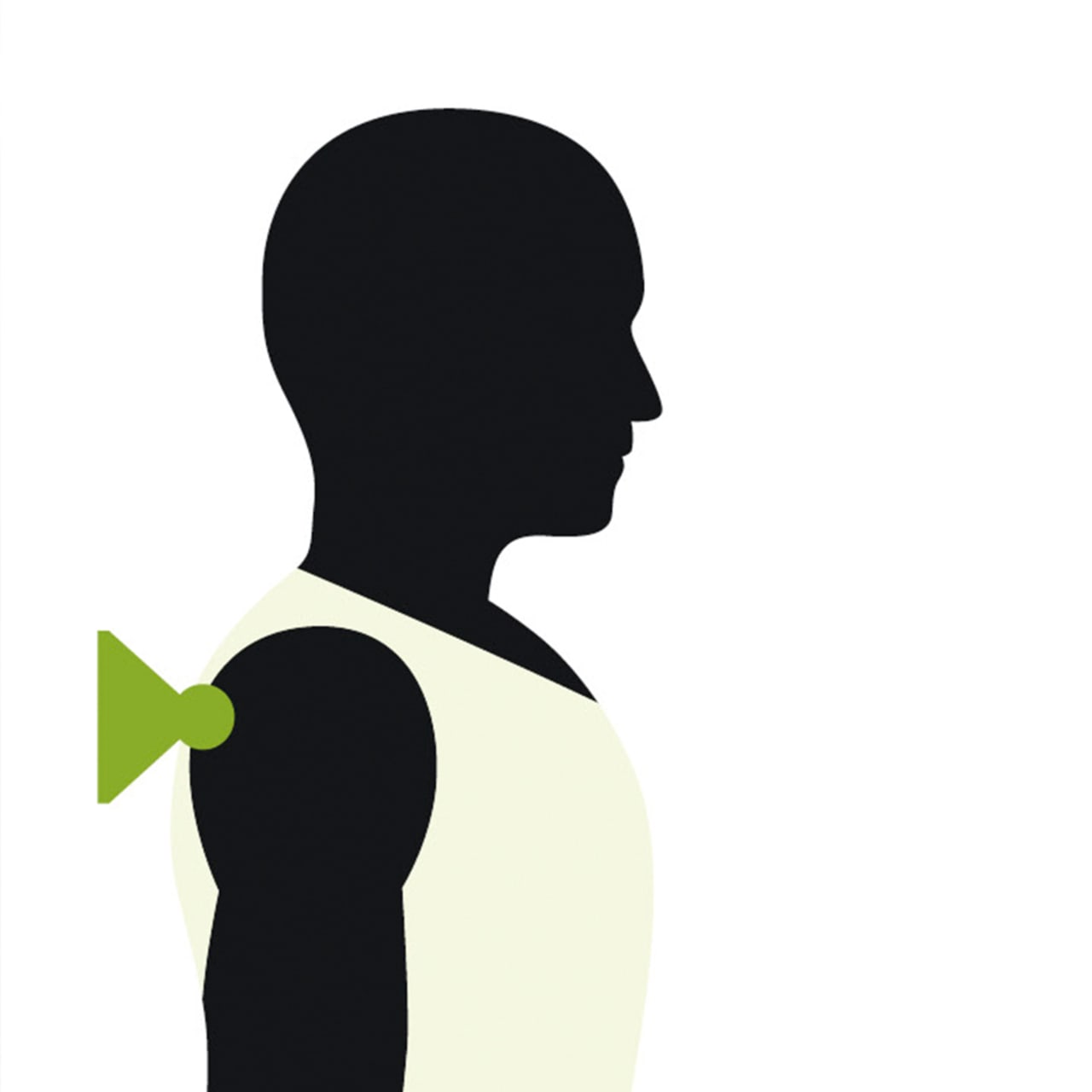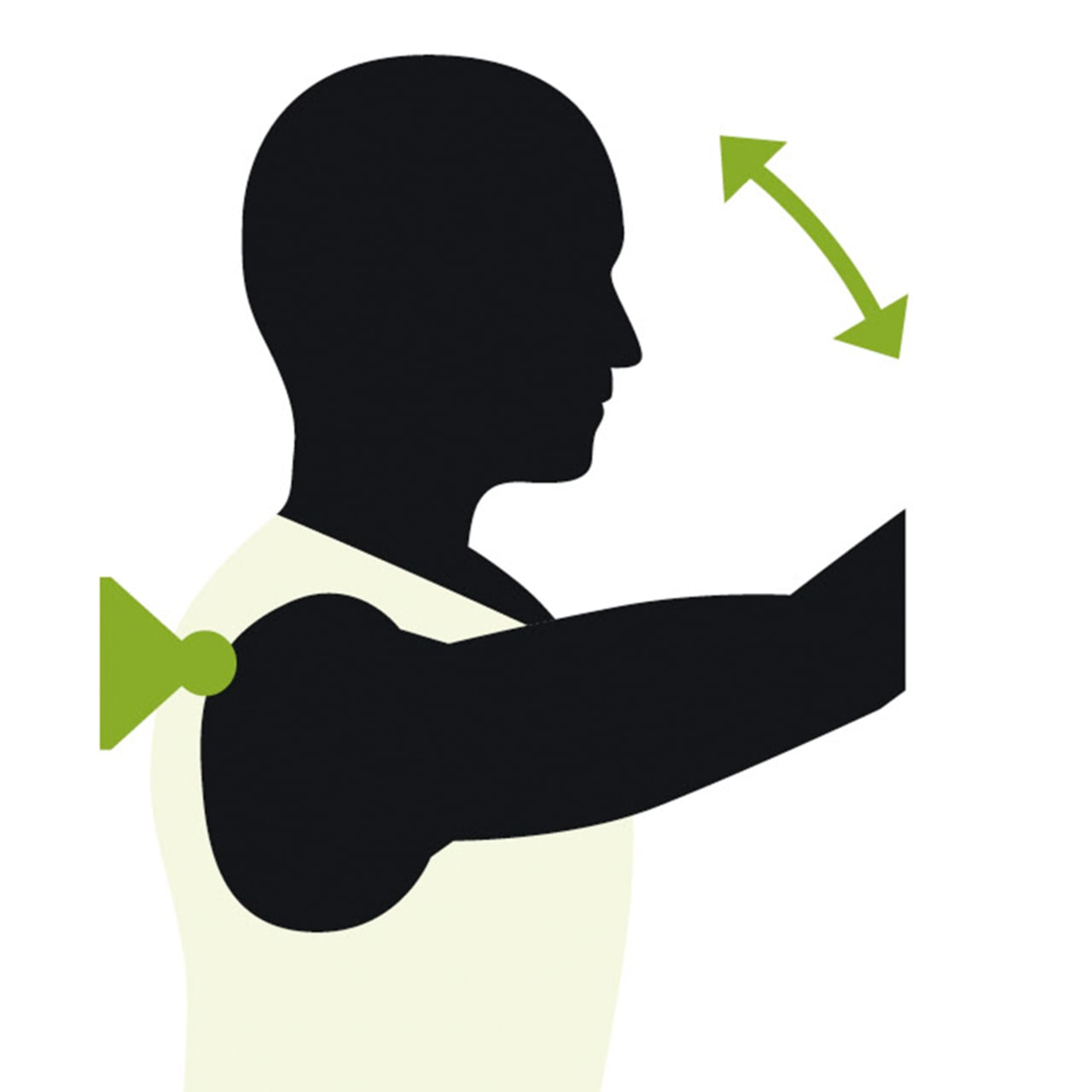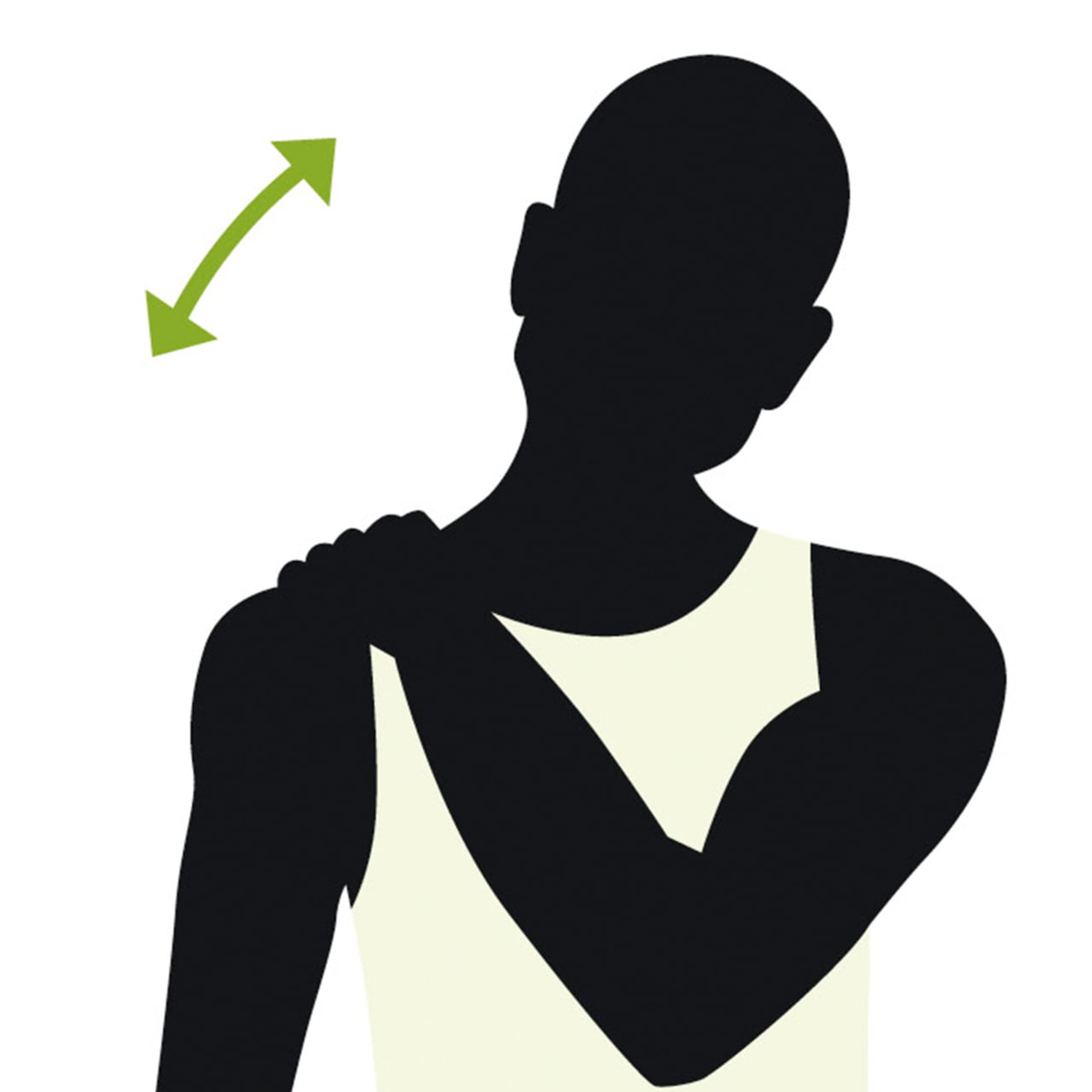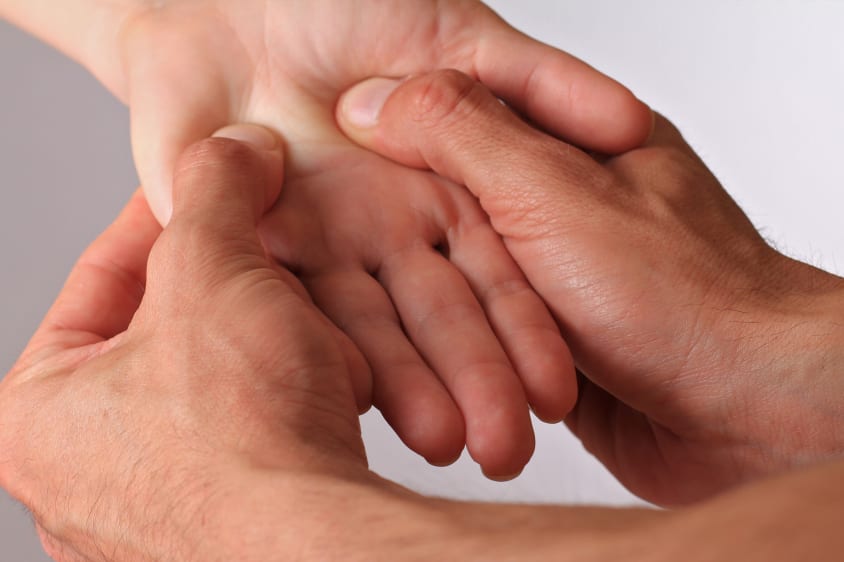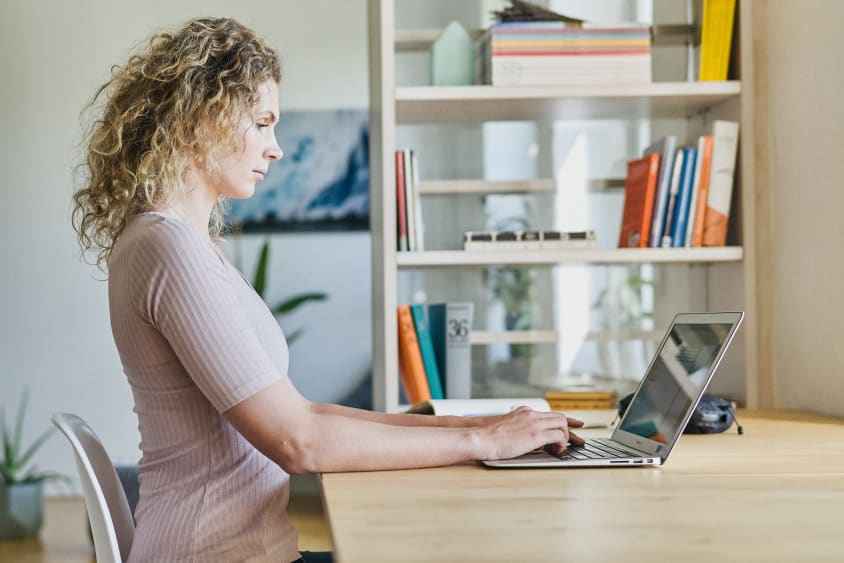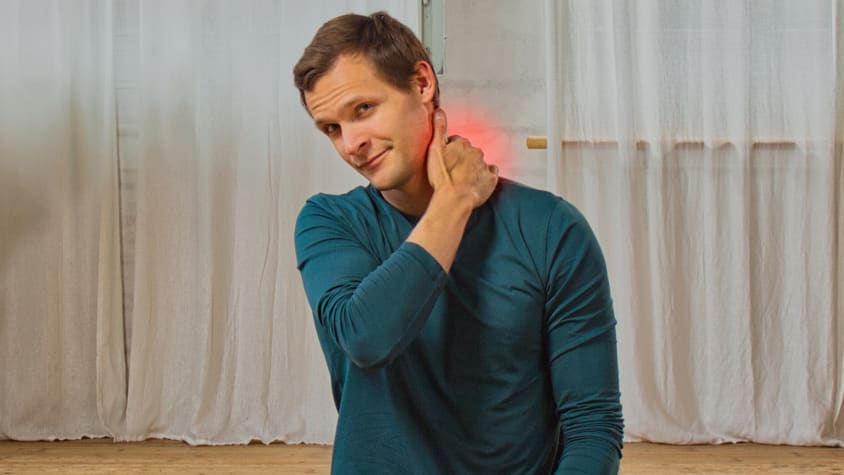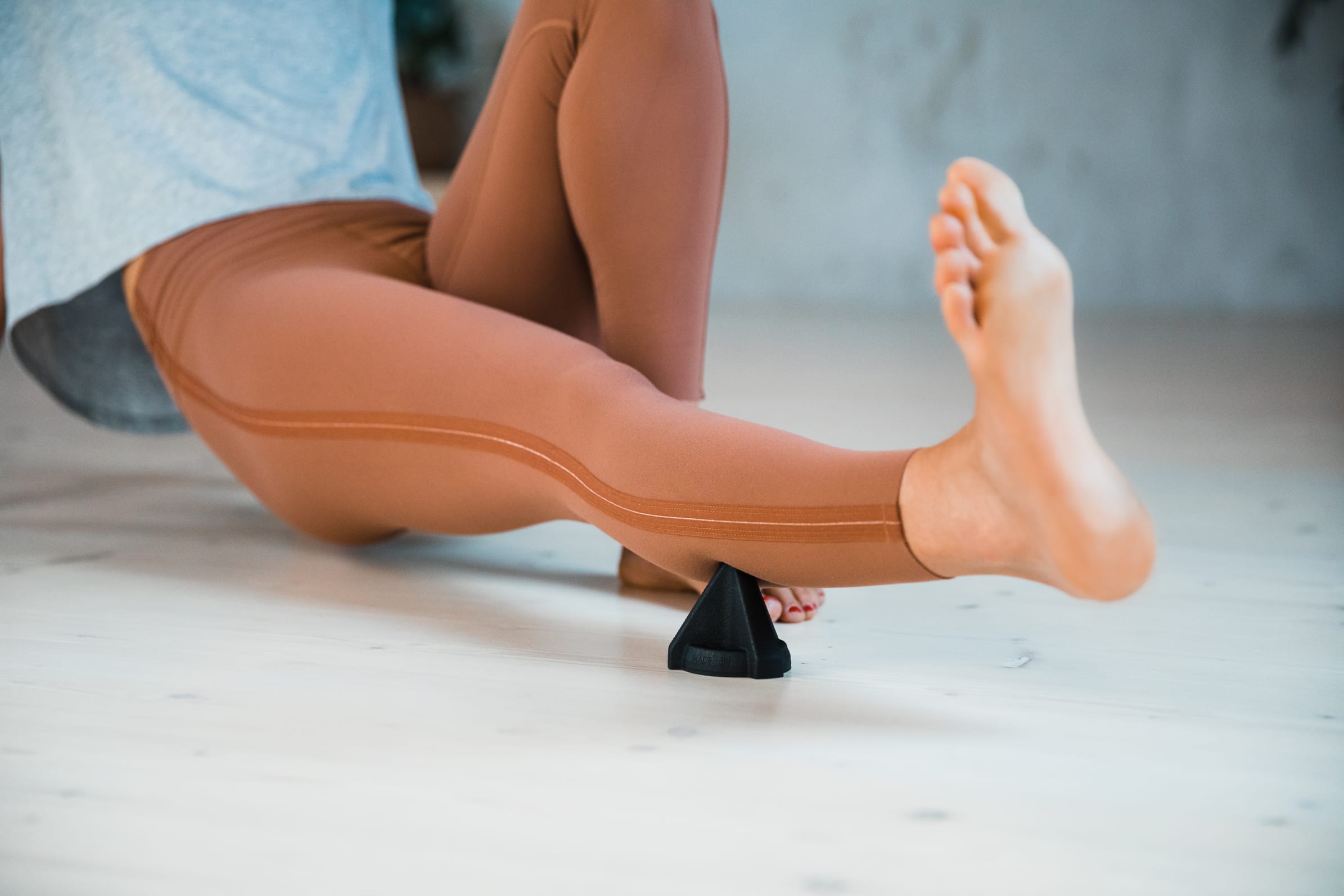
Find out all there is to know about the massage of trigger points and its effect.

Find out all there is to know about the massage of trigger points and its effect.
Trigger point massage is an effective method by which to alleviate myofascial pain.
Here we will explain for you precisely which disorders can be alleviated, and how triggering actually works, as well as which methods and tools are available to help you practise it. You will also learn the difference between trigger point massage and acupressure, as the two terms are often used synonymously.
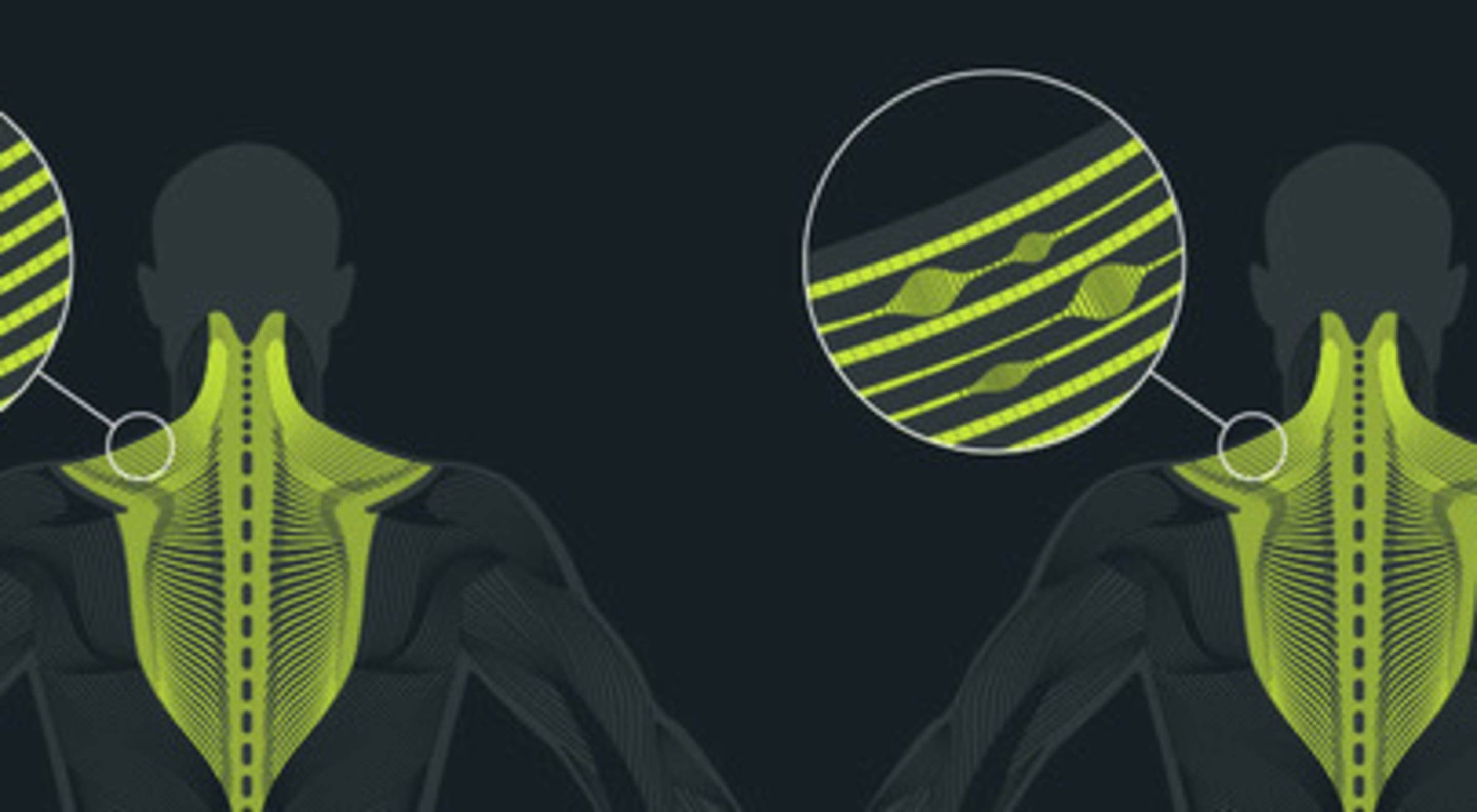
What does triggering mean?
With trigger point massage you can trigger pains (active trigger points) that are already known to you, but also previously unknown pains (latent trigger points). Thus, under certain circumstances, you will find that the causes of medical conditions lie in completely difference parts of the body, and ideally you will be able to eliminate them. Therefore, with trigger point massage, or triggering, trigger points are identified and stimulated by means of pressure in a highly targeted and selective manner.
A trigger point is a localised, pressure-sensitive hardening in the tissue. A pain pressure point will tend to occur in tissue that already has increased tension. The hypertensive tissue feels like a hard strand to the touch (myogelosis).
02 Are trigger point massage and acupressure the same thing?
Unlike with trigger point massage, the points that you stimulate when practising acupressure are located as fixed points on the body. The acupressure points are taken from the almost 400 acupuncture points that are located on the established energy pathways (meridians) on/in the body.
With trigger point massage, on the other hand, your find the trigger points by pressing on your body in order to search for them, while focussing on your own pain perception. Sense and feel your body and the signals it sends you. Noticeable, nodular hardenings are defined as trigger points, regardless of whether or not these lie alongside or on the energy pathways.
What’s more, there is no need to take into account any existing link between the points and your organs, and the effects of these links, such as common cold symptoms, as is the case with acupressure. Depending on the individual condition of the locomotor system, both the number of trigger points and their position will differ in each individual.
03 Trigger point massage to treat the most varied of medical conditions
As a result of a reduced oxygen supply, local inflammation reactions occur at the trigger point, ultimately culminating in the formation of connective tissue scars. As a result of this, acute pain can very easily and gradually become chronic pain.
With trigger point massage, you can counteract pain, which can express itself in the most varied of ways and to varying degrees, e.g. from piercing to dull pain, and from localised to generalised. Even systemic conditions, i.e. those that affect the entire body, ca be positively counteracted using trigger point massage. Nausea and dizziness are examples of this. Trigger point massage can produce considerable alleviating effects here.
The occurrence of symptoms such as this, due to an individual trigger point, explains the increased reaction of the sympathetic nervous system, which, as part of our vegetative nervous system, places the body in a state of enhanced readiness, i.e. it produces a stress reaction.
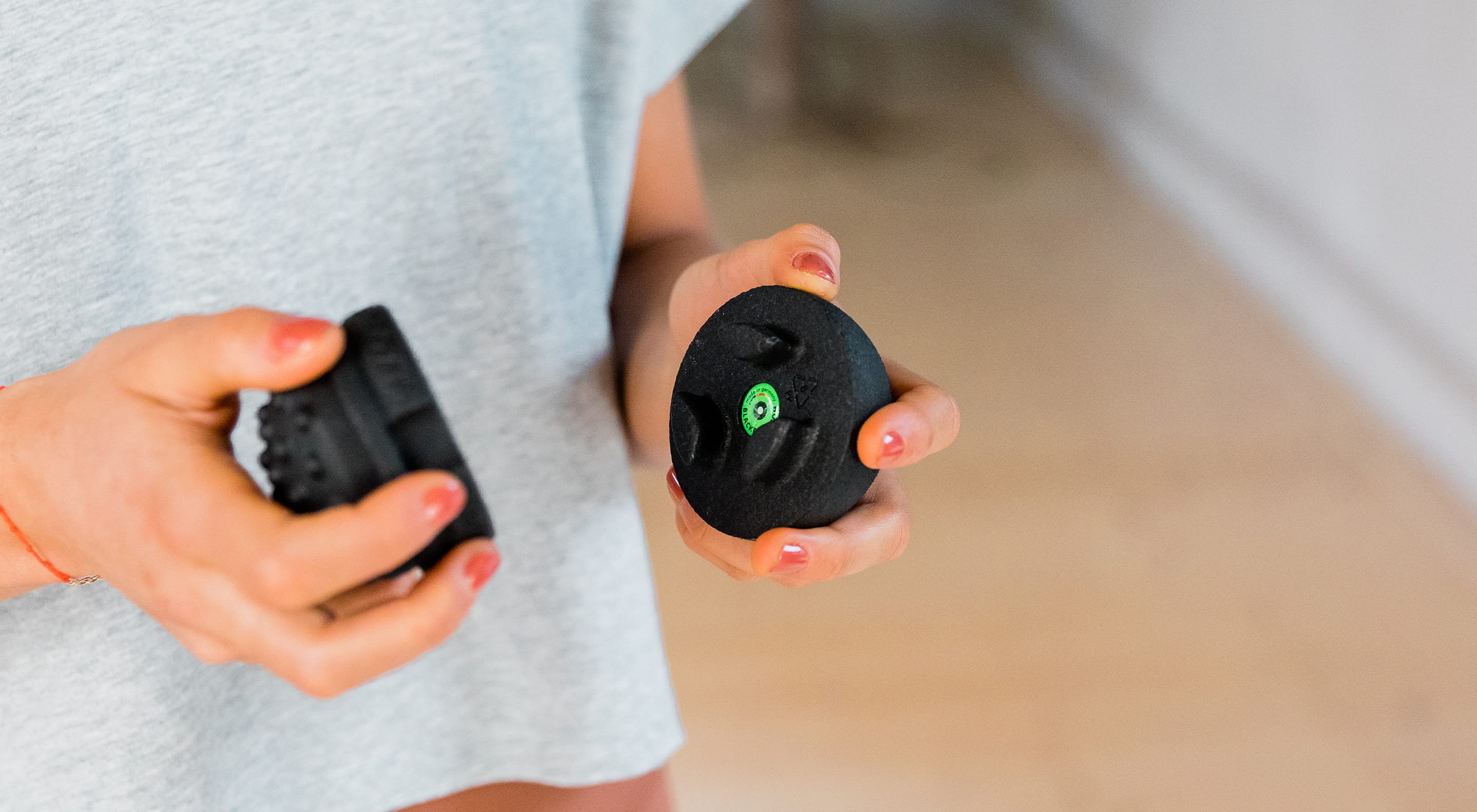
What does trigger point treatment do for you?
First of all, trigger point treatment focuses on the stretching and loosening of trigger points within hardened myofascial muscle strands, as well as the associated increased blood flow to the triggered muscular-fascial tissue. Through the local stimulation of the hardened and tensed tissue nodules, and the subsequent release of the pressure, there first occurs an under-supply and then an over-supply of oxygen to the triggered muscle tissue.
The goal of the trigger point treatment is to completely correct the myofascial trigger points, that is, to restore the full functionality of the muscles. Please note that trigger point treatment is not limited solely to palpable disorders; to the trigger points themselves, but that you can also illuminate triggering factors, such as smoking, a non-ergonomic workspace, poor posture or joint displacement, and attempt to find solutions to these issues.
Lack of mobility and overworking can also contribute to the emergence of myofascial trigger points. If you fail to consider the triggering factors, that is, the causes of the trigger points, new trigger points will continuously emerge, and may cause new problems. The effect of trigger point treatment is significantly enhanced by the additional avoidance of the triggers of trigger points, and as a result promises the longer-lasting and better alleviation of your symptoms.
05 Which conditions / pain does trigger point massage help with?
Trigger points are often linked to symptoms or conditions such as tension headaches, migraines and generalised pain in the arms and legs. Trigger point massage can also contribute to the alleviation of symptoms in case of neck pain and conditions affecting the lumbar spine, with or without radiation into the buttocks and/or legs, pain in the groin and hip region, as well as pain in the lateral thigh.
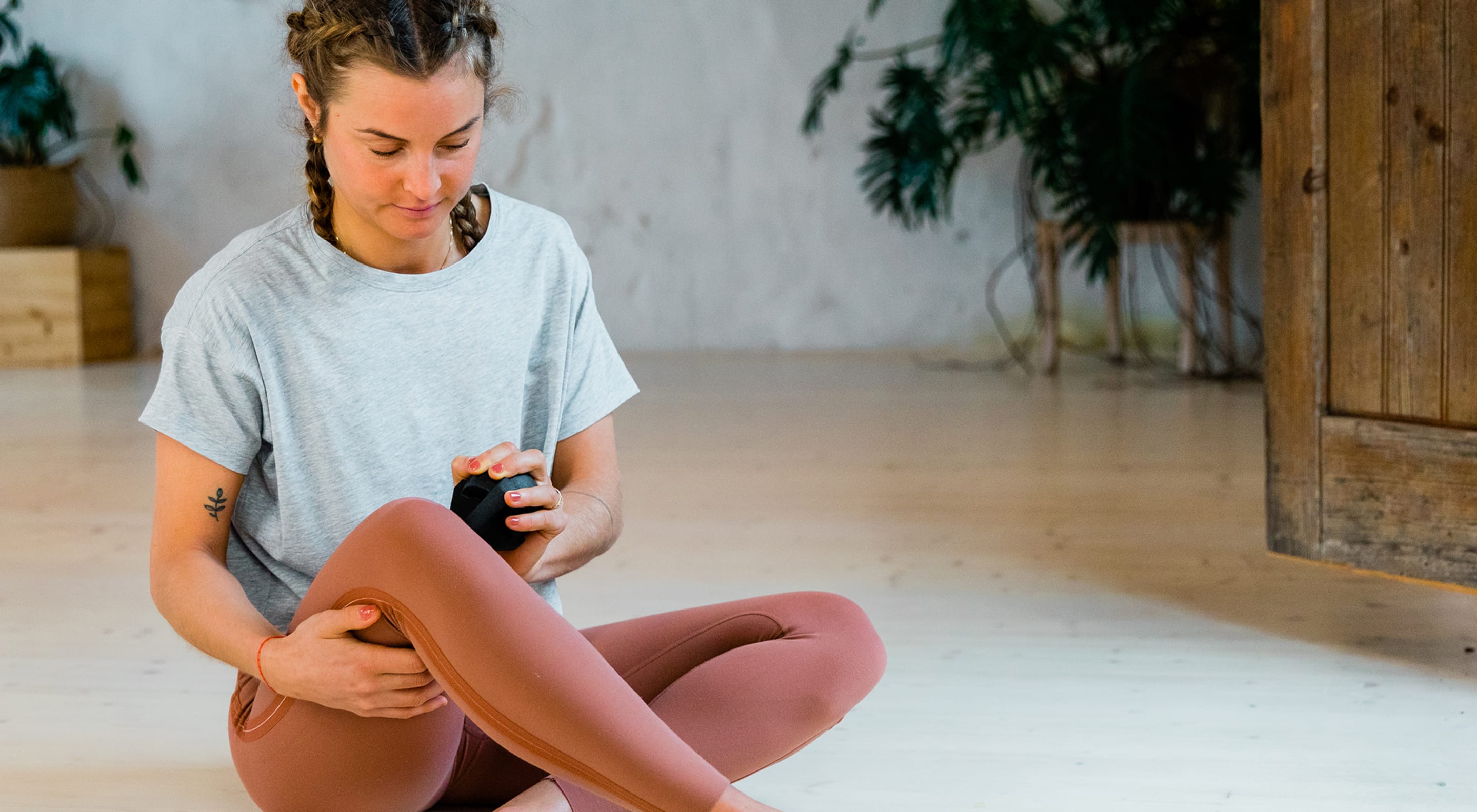
How does trigger point massage work?
Using trigger point treatment, you can convert both active trigger points that regularly cause you problems during everyday activities, as well as trigger points that have already become chronic, into trigger points that are at the very least silent, or even into completely healthy muscle tissue. This treatment has been practised for several centuries.
Three important components of trigger point therapy
Three important components are vital in order to be able to permanently relieve deep-lying myofascial triggers with trigger point massage:
1. Localised: Using localised pressure, you can suppress pain transmission and thus cause local insufficient blood supply and, consequently, a lack of oxygen; so-called hypoxia. When you release the pressure, more blood flows into the triggered tissue and it reacts to the excess of oxygen that is now available to the pathologically contracted tissue. The cessation of hypoxia in the trigger point tissue is a fundamental objective of trigger point treatment.
2. Sustained: By maintaining sustained pressure, you relax the trigger point tissue – this “stressor” of our sympathetic nervous system is inhibited.
3. Deep: the final component is deep-lying pressure. This is required in order to activate as many tissue cells, or fibroblasts, as possible. These react to pressure and produce fascial lubricant. This can result in increased movement in the deep-lying fascial layers.
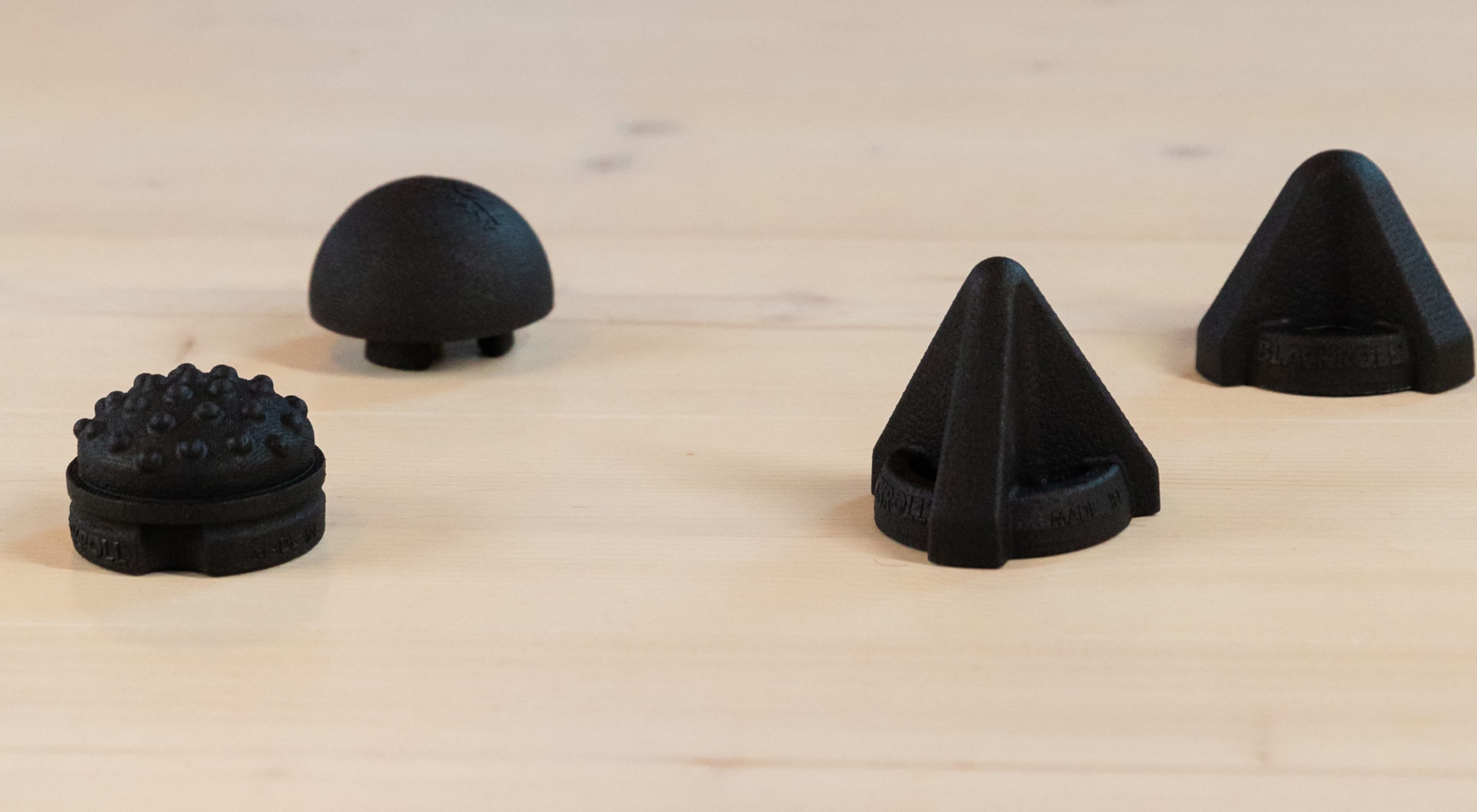
06 What are the differences in the application of the various methods of trigger point massage? Thumbs, trigger tools, fascia ball?
Essentially, there are various methods by which to relieve trigger points. Options include manual, invasive and technical procedures. For self-treatment, which is the method we are focussing on here, the options are manual trigger point massage with the thumbs, and triggering with tools such as the BLACKROLL® TRIGGER SET.
The BLACKROLL® fascia ball can also be used for trigger massage. The only difference here is that the contact surface of the trigger point that is in contact with the trigger tool is much greater. This means that, with the fascia ball in comparison to the smaller trigger, you do not penetrate so far into the deep-lying fascial layers, and consequently into the actual trigger point. However, this of course means that with the fascia ball you experience less pain when triggering. This makes it a good option if you are a newcomer to triggering and want to get used to triggering slowly, or if you are generally highly sensitive to pain.
As a preparatory measure prior to local trigger point treatment, you can massage an entire area using the BLACKROLL® foam roller in order to prepare the tissue for the subsequent localised treatment.
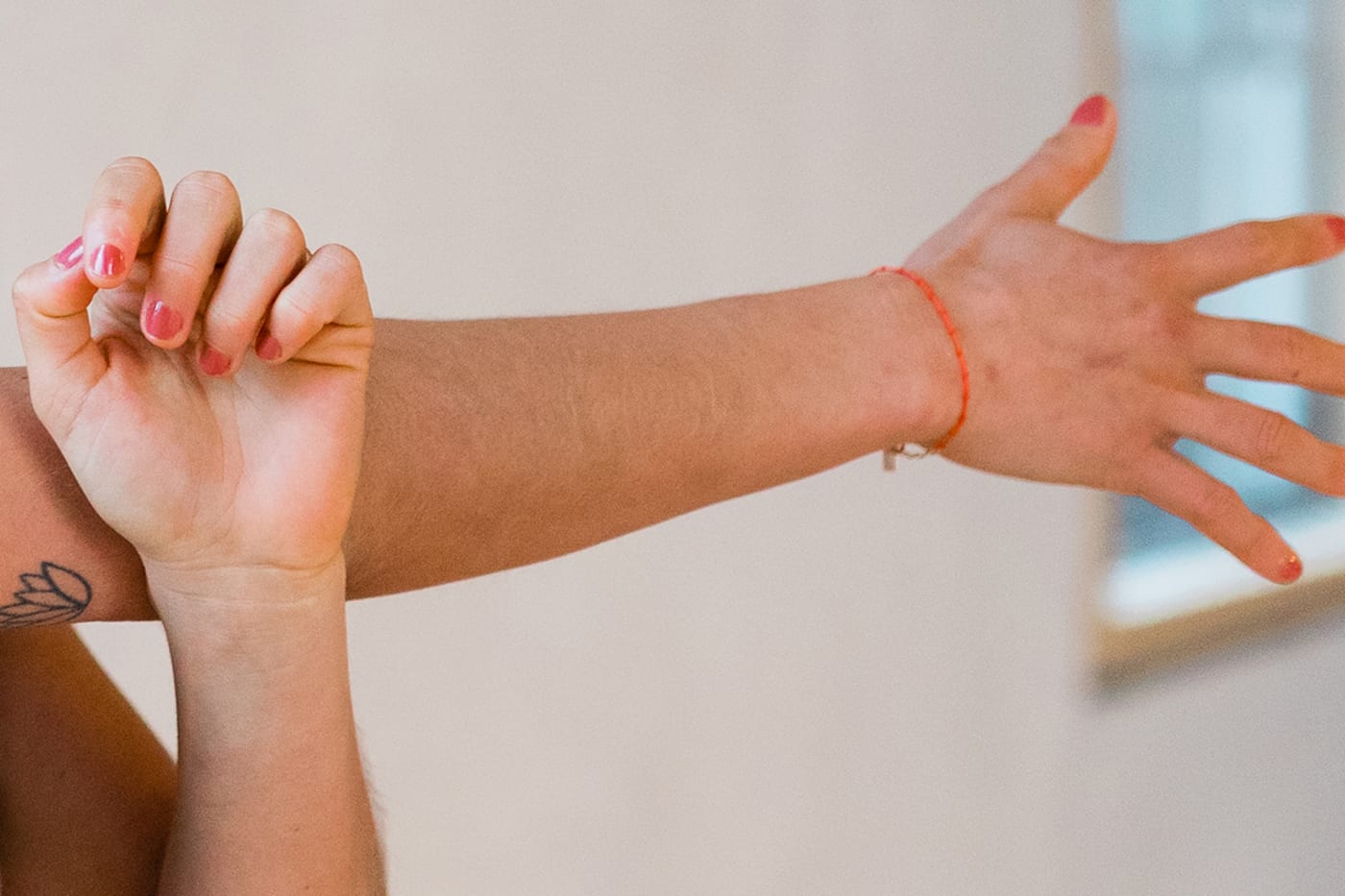
Manual trigger point massage with the thumbs
In the case of manual trigger point massage, you do not require any tools. You feel around your tissue, searching for hardened areas, and massage any contractions – which feel like nodules – with your thumbs, until you notice an improvement. Alternatively, you can simply apply localised pressure for just a few minutes, or you can stretch the tissue as much as possible using your fingers. However, over time, trigger point massage with the thumbs or fingers can become strenuous.
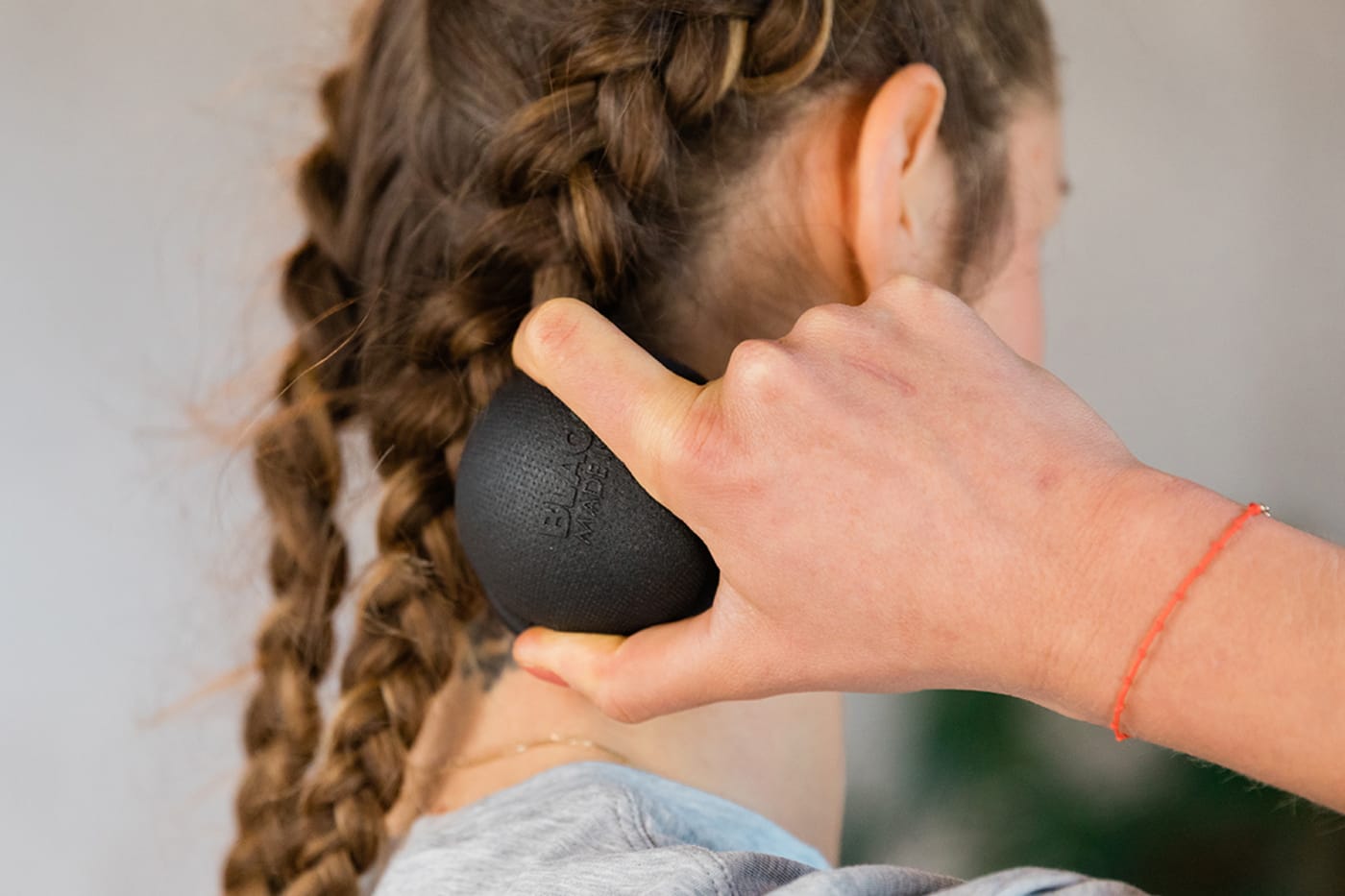
Trigger point massage using trigger tools
Trigger point massage with trigger tools involves three main steps:
And now: get going with some trigger point massage!




